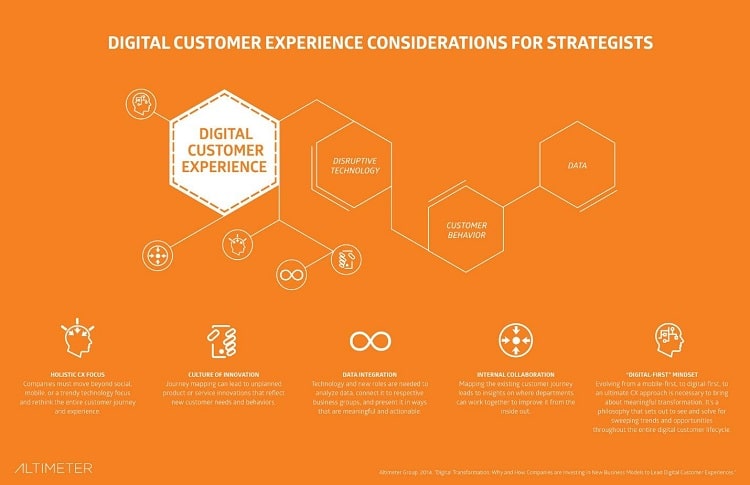D. Michael Abrashoff, who wrote ”It’s Your Ship,” an amazing piece on management techniques, said that “what is needed now is a dramatic new way of inspiring people to excel while things are happening at lightning speed.”

The question is:
Does Your Business Inspire Its Community, Customers And Leads?
And does your audience really get your message?
Here is how things stand in 2016:
- Right Message: It’s not just a matter of starting a blog and twitching the content here and there. In fact, launching a business blog in 2016 comes with additional responsibilities, as Jamie pointed out in his A Beginners Guide To Creating Your First Blog. The goal is to create an environment that sends the right message to your audience.
- Extra Attention: Customers want the extra attention. And they deserve it. Never take your clients for granted. Instead, show your gratitude and build on the premise of a great business relationship.
- Community: Everything runs more smoothly when there is a community to back you up. In fact, members can suggest strategies and ideas that significantly contribute to business growth processes. We all know how Pokemon Go screwed up. Learn from their mistakes.
- Three “V”: Vision – voice – value. These three are interconnected and ensure stable communication. We talk about voicing the right message to your clients, and the next element in the cycle is value. Your message must convey value to your audience. Otherwise, your strategy can only become half-successful.
Moving to the next step…

Just How Well do You Know Your Customers?
In the last five years, more companies have shifted from transactional value to lifetime value. It started with Zane’s Cycles back in the ‘90s, who introduced a new sales mod, by focusing on customer experience. Read the full story on Inc.com
Instead of instant profit, the company relied on generating customer loyalty which drove profit by the second year.
Increasingly more companies go for ‘freemium’ and progress to paid membership plans in order to retain customers and increase value of services.
This Harvard Business Review article differentiates between what should be free and premium.
The platform or marketplace model is quite the case study. Think of freelancing marketplaces which do not offer only free membership plans but also premium ones.
From one membership to another, clients and freelancers get to compare benefits and services. Upgrades cost as little as $10/month and billing is done monthly or yearly.
Customers love complementary services. It’s no hidden fact that once a customer becomes loyal to a service, the probability of needing a complementary service certainly goes higher. And customers would use the same service provider or go through recommendations.
According to Inc.com, small businesses can trigger loyalty compared to bigger brands, which also leads way for SMEs to expand their services palette.
With these aspects in mind and new technologies constantly seeing the light of day, companies need to combine new and old sales strategies.
Introducing the WhatsApp Instant Messaging Model
As of February 1st, one billion users call this app their preferred messaging platform (source: WhatsApp Blog).
Not only that, but starting in the first quarter of 2016, effectively, the company is inviting businesses to join with free membership plans (that’s right, it is now a 100% free service).
The company even sent a message to all users informing them that sensitive information is secured and will not be shared with any third parties–which makes their app “one in a billion” (pun intended).
Even with the new terms of service updates, you can opt out of them and still continue using the app if you do it in the next 30days.
Wondering how the WhatsApp business model can prove beneficial today? Check it out below.

#1. Individual Customer Assistance Experience
In a world of spam and numbers, being able to offer a one-on-one customer experience is probably the best gift to your loyal followers. WhatsApp is personal and spam-free, which makes for a great chatting experience. There are three ways to offer assistance: voice calls, voice messages and text messages – all free.
#2. Real-Time Support
The idea of “here and now” is not new. However, we often see customers suffering from delayed support on the company’s side. In most cases, the inability to offer an instant response to someone’s problems can cause frustration, which eventually leads to cold relationships and even a loss of customers.
#3. Reinvention and Adaptation
You can adapt the service to fit your business peculiarities. Here’s an example: online ordering and concierge services. A new trend is here: the “Whatsapp order.” Companies offer a way for customers to order online and keep in touch with their favorite brands. From restaurants and cafés to clothing stores, any ecommerce business, product or service can benefit from the experience.
#4. Customer Feedback
With real testimonials growing in importance, a brand can now receive customer feedback, immediate, online and at their disposal. Websites with mobile versions can easily be updated with a simple mobile print screen of a customer’s testimonial–a great way to generate more visual content, too.
#5. Communication and Project Management
The idea of group chat doesn’t just mean a way to keep in touch with friends, but also an innovative way for colleagues and teams to work together. Communication and project management in one place. Going further, why not add your customers in the mix? WhatsApp seems more friendly and personal than other “virtual rooms,” due to the instant call-to-action nature of the app.

To Sum It Up…
The main idea is to find a common line between the needs of clients and those of your own business. There is always a way to voice your message in a more direct, personal manner. We witness the end of an era, where everything is automated, impersonal.
To close with D. Michael Abrashoff’s words again, “the key to being successful […] is to see the ship through the eyes of the crew. Only then can you find out what’s really wrong and, in so doing, help the sailors empower themselves to fix it”. In this case, the crew is not just your team. It’s also your customers.
Roxana has been a digital entrepreneur for the past 8years, owner of several online ventures and a passionate community builder. She enjoys challenging companies to upgrade their marketing strategies and create a better place for their customers and teams. You can connect with her anytime via Twitter: @roxanasoi or her marketing blog, SERPlified.com.

